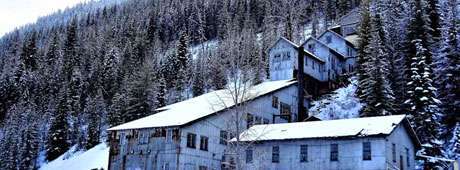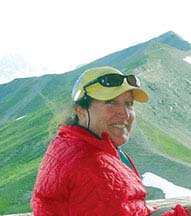No products in the cart.
Osburn—Spotlight

Mining Past, Hospitable Present
By Mary Terra-Berns
On a beautiful sunny-but-cold day last fall, as I rode my bike through Osburn, my peripheral vision caught a glimpse of something I hadn’t seen in a long time: a teepee burner. I was a little surprised, since I’d passed this spot many times and never had noticed the rusting relic. Teepee burners were used by lumber companies to burn scrap wood and sawdust until they were outlawed for environmental reasons in the 1970s.
Nature was taking over the property, which explains how I missed the burner in the warmer months. The trees surrounding the burner would have camouflaged it with a full set of summer leaves. As I scrutinized the area, I spotted a second burner a couple hundred yards to the east of the first one. The second one was concealed by even more trees. I was keen on checking them out, but the sun was slipping below the ridge above the burners and I was starting to get cold. With the temperature dropping and several miles to ride back to my car, investigation would have to wait for another day.
I got to know Osburn several years ago when my job as a biologist required reviewing the regulatory requirements and pond designs for a cooperative project between Idaho Department of Fish and Game, Shoshone County Sportsmen’s Association, several federal agencies, and interested citizens to update and enhance Gene Day Pond. While working on the pond project, I drove past the teepee burners several times and never noticed them hidden in the vegetation. I recently found out the burners belonged to the Burns-Yaak River Lumber Company, which until the mid-1960s had a small lumber mill between the burners that produced wood products for nearby communities and the Polaris Mine and Mill next door.
I hoped to find a photo of the wood mill in its heyday but after searching through old newspapers, particularly the Wallace Miner, and a few books, the only reference I found for the Burns-Yaak River Lumber Company was in the book, The Coeur d’Alenes Gold Rush and Its Lasting Legacy (2017) by Tony and Suzanne Bamonte, which had a photo of the larger Burns-Yaak mill on Pritchard Creek at the old Eagle City townsite.
This content is available for purchase. Please select from available options.
Purchase Only
Purchase Only

